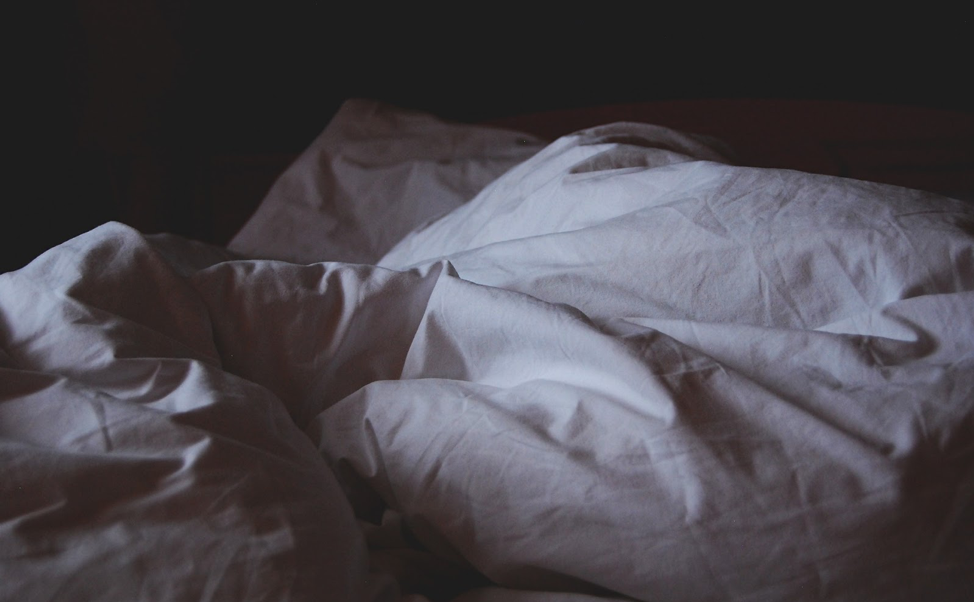Sleep Quantity

Photo credit: pixabay.com
The necessity of sleep is quite obvious for our health. It is usually stated that our bodies require somewhere between seven to nine hours of sleep each night for proper restoration of our mind and body. Once we start skimping on our sleep, we are affected by the harmful side effects of sleep deprivation. We go through our days groggy, experience brain fog with trouble concentrating, and can’t wait to get back in bed. The effects of sleep deprivation could be even more detrimental to our health when we are chronically affected by lack of sleep. Obesity, high blood pressure, and risk of heart disease are all possibilities when you don’t get enough sleep.
Sleep Quality
But whether we are logging in enough hours of sleep or not, sleep quality is also important! What happens when you think you’re clocking in enough hours of sleep, but the quality of your sleep is so poor that you wake up feeling like you hardly slept at all? Consistently getting poor quality of sleep can lead you to the same fate that awaits those who give up hours of sleep time. In order to protect your health, be sure you’re doing what it takes to get the best quality of sleep possible and maximize on your restoration time.
How You Might be Ruining your Sleep Quality
When you chronically experience difficulties getting restorative sleep, you may be suffering from a condition requiring treatment from a specialist. Before you go to that length, there are ways you can take matters into your own hands to try to repair your sleep. There are several sleeping habits that reduce your sleep quality which you may not even be paying attention to. These common issues include:
- failing to properly wind down in the evenings
- struggling to find comfort
- sleeping in a poor environment that is not conducive of good sleep.
Here’s what you can do to fix each issue:
Implement a Wind Down Routine into your Evenings
Your mind and body both need to be properly prepared for better sleep quality. If you expect to be able to just jump into bed and fall asleep, you’ll likely be disappointed.
Whether it’s intentional on your part or not, you’ve probably noticed that on the nights that you sit around relaxing for an hour or so, you’re ready to head to bed earlier than usual. That’s because when you allow your body to start winding down, it receives the signal to produce melatonin, the hormone controlling your sleep/wake cycle. This makes falling asleep much easier.
Become more intentional about how you spend your evenings. In the last hour or two before bed, activate a “wind down routine.” Step one should be putting down the technology. Televisions, smart phones, and other devices that rule our life emit stimulating blue light. When we’re exposed to artificial light sources, the body’s natural circadian rhythm becomes confused. Essentially, because your retina is still receiving light, your body is convinced it’s still daylight and you should be in the waking hours. This suppresses the production of melatonin and gives you trouble falling asleep. Instead of scrolling on your phone or staring at your TV, try reading a book or doing other technology-free activities.
Additional activities that will help you wind down in the evening include stretching, using essential oils like lavender and chamomile, and taking a warm bath. By raising your core body temperature a few degrees in a warm bath, you’re more likely to experience a temperature drop when you jump into bed which helps you fall asleep and reach deep sleep. Stretching can help relax your muscles, release built-up tension within your body, and ease your mind of stress before trying to go to bed.
Digital COMT
Did you know that Digital COMT (Digital Clinical Orthopedic Manual Therapy), Dr. Joe Muscolino’s continuing education video streaming subscription service for manual therapists and movement professionals, has at present (February of 2019) more than 1,000 video lessons on manual and movement therapy continuing education, including entire folders on complimentary alternative medicine/health, massage therapy, stretching, joint mobilization, fitness, Pilates, and yoga. And we add seven (7) new videos lessons each and every week! And nothing ever goes away. There are also folders on Pathomechanics and Anatomy and Physiology, including an entire folder on Cadaver Anatomy… and many, many more on other manual and movement therapy assessment and treatment techniques? Click here for more information.
Find Ways to Get More Comfortable
 Tossing and turning all night is no way to get quality sleep. Our comfort is vital to the restorative hours of our sleep. A common culprit in stealing your sleep quality is an old or improper mattress. After around seven to 10 years, your mattress reaches the end of its lifespan and loses the qualities that help keep you comfortable. The innerspring coils and memory foam become compressed after years of sleep, and you’ll be left sleeping on a saggy mattress.
Tossing and turning all night is no way to get quality sleep. Our comfort is vital to the restorative hours of our sleep. A common culprit in stealing your sleep quality is an old or improper mattress. After around seven to 10 years, your mattress reaches the end of its lifespan and loses the qualities that help keep you comfortable. The innerspring coils and memory foam become compressed after years of sleep, and you’ll be left sleeping on a saggy mattress.
Upgrade your bed by finding a better mattress that offers the most important qualities such as pressure relief, responsiveness, and durability. Become educated on what you need to look for and which type of bed will be best for you comfort, whether it’s an innerspring, memory foam, or hybrid mattress.
Many people believe that the firmer the mattress, the better. But this is not necessarily true. From the point of view of your spine, the mattress should be soft enough to allow your spine to sink in, but firm enough to then support your spine. For example, if you are sleeping on your back, the mattress should be soft enough to allow your midback (thoracic spine) and buttocks (pelvis) to sink into the mattress, but the mattress should be firm enough to allow your low back (lumbar spine) to be supported. Ultimately, whether soft or firm, the mattress should be comfortable, because if you are not comfortable, you will not be able to fall asleep and stay asleep.
Optimize Your Bedroom for Better Sleep Quality
The final steps you can make in attempts to achieve better sleep relate to your bedroom. Evaluate if you have any external forces interrupting you. These could include light pollution or sound disruptions.
If external light sources are invading your bedroom, hang blackout curtains or shades to avoid waking up from the light. If internal light sources are causing issues, such as a light on a television or alarm clock, find alternatives so that you can avoid their presence. You can store a television in an armoire, or just eliminate the television from your bedroom all together. Most newer televisions also allows for you to turn off whatever light they have. Perhaps, instead of a digital alarm clock, use an analog one that won’t require any light. Or you can use your cellphone / mobile phone as your alarm clock with its screen darkened.
As for noise, there’s only so much you can do when you live in an urban setting; however, a white noise machine may help. White noise machines help you stay asleep when any intermittent loud noises occur because they create a constant background noise that tend to dampen the effects of any sounds that arise. If possible, you could also consider relocating your bedroom to a different room in the house that is farther away from the source of noise disruptions.
Changes for Sleep Quality
Whatever it takes, make sure you go to the efforts necessary to try to improve your sleep quality. If all else fails, consider visiting a sleep specialist to help you get to the root of your problems and treat your potential condition.
This blog post article was primarily written by Laurie Larson ([email protected]). Laurie is a freelance writer who focuses on health, home, and lifestyle topics.
(Click here for the blog post article: How Exercise and Stretching Improves Sleep Deficiency.)
Digital COMT
Did you know that Digital COMT (Digital Clinical Orthopedic Manual Therapy), Dr. Joe Muscolino’s continuing education video streaming subscription service for manual therapists and movement professionals, has at present (February of 2019) more than 1,000 video lessons on manual and movement therapy continuing education, including entire folders on complimentary alternative medicine/health, massage therapy, stretching, joint mobilization, fitness, Pilates, and yoga. And we add seven (7) new videos lessons each and every week! And nothing ever goes away. There are also folders on Pathomechanics and Anatomy and Physiology, including an entire folder on Cadaver Anatomy… and many, many more on other manual and movement therapy assessment and treatment techniques? Click here for more information.

